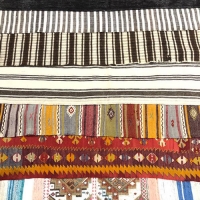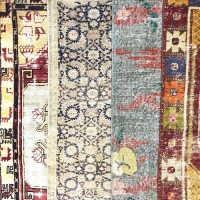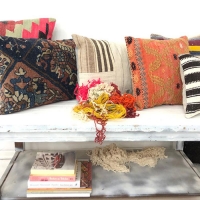
Weaving Techniques in Rugs
There are various weaving techniques in rugs and carpets. Each has its own structures and weaving techniques. Cicim weaving, bell weaving, sumac can be classifications such as weaving. All of these fabrics are considered within the context of kirkit weavings.
The raw material of Cicim textile is generally wool. Cicim weaving on the warp yarn system is stretched in the backdrop while colored yarns are passed through the warp with specific jumps to create motifs. Motifs resemble wrapping. In many places, those who have touched are sparsely patterned. Cylindrical weaves are created by using cross and vertical lines with equal winding and jumps.
Cicim weaving are divided into sparsely patterned cicim, frequent patterned cicim and weft face. They are used in areas such as saddlebags, pillows, sacks, bags and floor mats except rugs. Such a woven fabric can only be woven by its own technique, or a complex system of cicim-rug, cicim-zili, cicim-sumac or several of them can be used.
Zili weaving is made of woven, wool and colored yarns are formed by processing with specific throws to form motifs. The interior of the motifs are filled by making throws with yarns. This kind of products are formed by passing three or five top and bottom colored pattern yarns.
Cicim and zili rugs with different weaving details have different usage areas. Separate fabrics can be produced in different techniques. The motif of the pattern to be made on the front face of the pattern and bell weaving makes the flat tissue weft. In addition to the warp yarn system, a second colored weft yarn is used between warps.
A regular composition is formed on the back surface and the ropes are scattered and mixed in the front section. In this regard, the zili and cicim rugs have the same technical features. However, the fact that the patterns are woven on the front surface without leaving any space separates the zili and the cicim weave..
On the vertical bench called Istar in the weaving, the zili weawings are made on the reverse side. This technique can be easier than cicim. In this context, such as a flat Zili, a cross Zili, a sparse Zili, a checkered Zili and a contoured Zili are available.



